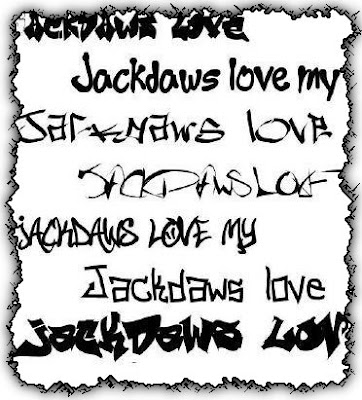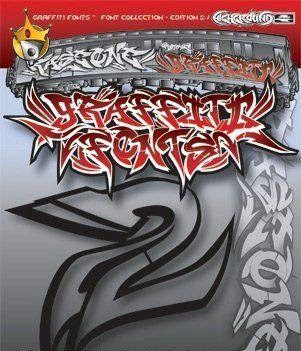
What is graffiti?
The latest Wordpower Dictionary says graffiti is “unauthorized writing or drawing on a surface in a public place.”
It includes the horrible scribble you see painted or scrawled on fences, bridges, garage doors, on the sides of buildings, houses, and elsewhere (also called tagging). Most of it is garbage that looks like 4-year-olds have done it.
Some of it is colorful and might look artistic if it hadn't destroyed someone's property. And that is the problem with graffiti — it is “unauthorized”, as the dictionary says, and it destroys someone's property. It is a crime, like stealing, because it steals the property owner's right to have their own property look clean and nice. And it makes repairs costly for the property owner; graffiti scribblers never offer to pay the cost of repairing their destruction, which may cost thousands of dollars. A few property owners pay to have colorful murals and other large-scale paintings on their walls and fences. Although some people say this is graffiti while the unauthorized scribble is “tagging”, the dictionary does not make a distinction.
That's because graffiti already has a bad meaning in people's minds, so people who think they are “good” graffitists will need to find another word if they hope to make a positive impression.
I am not criticizing authorized art — which I love, by the way.
I do not support graffiti vandalism. Some graffiti vandals say they are improving the look of fences or walls by doing colorful paintings on them. This is disputable, because they don't ask the property owner whether they can do it. Would a graffiti vandal want you coming into his or her house or apartment and smash down the front door because you thought the place would look better without a door? Of course not. Yet a graffiti vandal can cost a property owner much more than the cost of a door. It can cost hundreds or thousands of dollars in repair bills, or lower the property's value by thousands of dollars — just with one mindless scribble across a fence or wall.
Some graffiti vandals think they are doing something new. Graffiti vandalism dates back a long way. Archaeologists have found ancient graffiti on the great pyramid at Giza in Egypt, on an Egyptian sphinx, and on walls in Pompeii (the Italian town buried by the Mount Vesuvius volcanic eruption in AD 79). Private property owners in ancient Rome obviously felt graffiti vandals were pests as much as today's property owners do.
A carved sign found in ancient Rome begged people not to scribble on the walls. By the way, many people do not know that graffiti means more than one scribble. The word for a single scribble is graffito. Graffiti vandals often show how ignorant they are by risking falling from bridges or trains while graffitiing. Some actually do die; others suffer horrific injuries.
In some neighborhoods, residents get so fed up with graffiti vandals that they secretly watch for them, follow them home, and later come back and damage the graffitists' homes.
How New York City cleaned up graffiti on the subway
New York city used to have a terrible problem with graffiti in its subways. Then in the mid-1980s a new subway director named David Gunn decided he was going to stop graffiti on trains. He started with the number 7 train that connects Queens to midtown Manhattan.On stainless steel cars his team cleaned off the graffiti with solvents. On painted cars, the team painted over the graffiti as soon as they appeared.
At the train yard on 135th Street in Harlem, an anti-graffiti team waited for the graffiti vandals to finish their destruction each night.
Mr Gunn said: “Then we'd walk over with rollers and paint it over. The kids would be in tears, but we'd just be going up and down, up and down. It was a message to them. If you want to spend three nights of your time vandalizing a train, fine. But it's never going to see the light of day.”
Some church youth groups have had great success ridding their area of graffiti. Surveys have found that teens who go to church get into less trouble and have higher values than other teens, so it's not surprising that church youth groups are against graffiti destruction. Some city authorities now supply anti-graffiti kits to anyone who wants to clean up graffiti. When youth groups decide to clean off or paint over graffiti as soon as it appears, graffiti vandals stop in that area. The graffitists want people to see their work. When someone gets rid of it before anyone else sees it, the graffitists have no incentive to target that area.

























